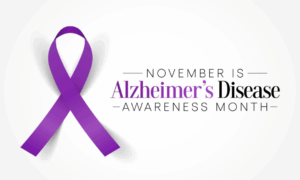Radiant Hope in Neuro MRI for Alzheimer’s Month
 November marks National Alzheimer’s Disease Awareness Month, a time to reflect on the human stories behind every statistic. Stories of memory, connection, fear, and hope. With tools like neuro MRI, we can gain a clearer understanding of the brain, supporting earlier detection, guiding treatment, and helping preserve dignity for those affected and their families.
November marks National Alzheimer’s Disease Awareness Month, a time to reflect on the human stories behind every statistic. Stories of memory, connection, fear, and hope. With tools like neuro MRI, we can gain a clearer understanding of the brain, supporting earlier detection, guiding treatment, and helping preserve dignity for those affected and their families.
Why Alzheimer’s Research Matters to Real Lives
Alzheimer’s is not simply about forgetting names. It gradually chips away at identity, relationships, and everyday life. In the U.S. today, an estimated 6.7 to 6.9 million adults live with Alzheimer’s dementia. This number is projected to nearly double by 2060 without breakthroughs.
Every life touched by Alzheimer’s carries its own narrative: a parent who can’t remember family gatherings, a spouse shouldering caregiving, a child confronting the loss of a loved one who is still alive. That personal, human toll is what drives urgency in research.
When we find new biomarkers, new therapies, or ways to slow progression, we gain more than numbers. We reclaim time, dignity, and hope for families. We may afford someone one more morning of clarity, one more shared conversation, one more hug.
The Role of Neuroradiology/Neuro MRI
Neuroradiology is the medical specialty that uses imaging to study the brain and nervous system. In Alzheimer’s, neuro MRI is a cornerstone in both clinical care and research.
Here’s how neuroradiology/neuro MRI work together:
- Rule out other causes
MRI helps exclude treatable or structural causes of memory loss—tumors, strokes, inflammation—that might mimic Alzheimer’s. - Detect characteristic brain changes
Structural MRI can demonstrate shrinkage (atrophy) in regions like the hippocampus, entorhinal cortex, and temporal lobes. These areas are particularly vulnerable in Alzheimer’s. - Support diagnosis and monitoring
Longitudinal MRI scans help track the pace of brain changes over time, assisting clinicians in determining progression and response to therapies. - Explore advanced biomarkers like brain iron
A cutting-edge MRI method, quantitative susceptibility mapping (QSM), measures iron deposits in the brain. A 2025 study showed that higher iron levels in memory-related regions correlated with faster cognitive decline and risk of mild cognitive impairment. Such biomarkers may one day help identify Alzheimer’s pathology years before symptoms emerge. - Bridge to multi-center research efforts
Imaging networks like ADNI (Alzheimer’s Disease Neuroimaging Initiative) standardize MRI protocols across centers so that data can be shared globally. Radiologists play a key role in translating those real-world scans into evidence for new therapies.
Why This Matters in Alzheimer’s Awareness Month
- Awareness brings research funding and advocacy. When communities understand the human and scientific stakes, they support policies and grants that drive progress.
- Early detection matters. The earlier Alzheimer’s pathology is recognized, the better the chances for treatments to slow its impact.
- Hope is not lost. Each advance in neuroimaging, biomarker discovery, or therapeutic trial represents a flicker of possibility for families to reclaim memory, connection, and life.
Each scan belongs to a person: a mother, a grandfather, a friend. Behind the grayscale images are stories, love, loss, and hope. In Alzheimer’s Month, we lift those stories, unify our efforts in research, and push forward with compassion and purpose.
Let’s honor the faces behind Alzheimer’s by striving for better imaging, deeper understanding, and gentler care.